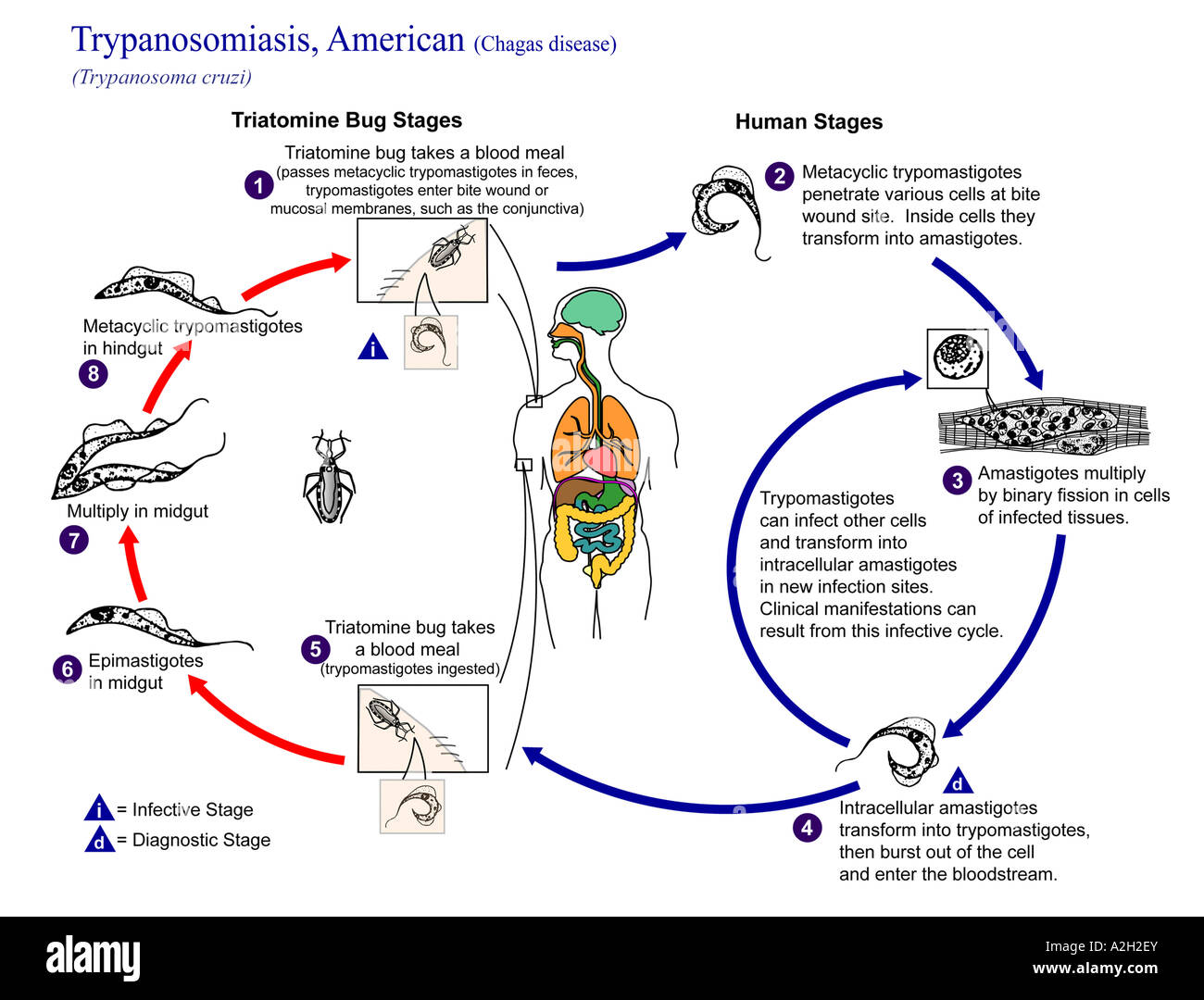illustration depicting the life cycle of Trypanosoma cruzi the causal agent of American Trypanosomiasis

Image details
Contributor:
Scott Camazine / Alamy Stock PhotoImage ID:
A2H2EYFile size:
48.7 MB (1.1 MB Compressed download)Releases:
Model - no | Property - noDo I need a release?Dimensions:
4725 x 3600 px | 40 x 30.5 cm | 15.8 x 12 inches | 300dpiMore information:
This illustration depicts the life cycle of Trypanosoma cruzi the causal agent of American Trypanosomiasis The protozoan parasite Trypanosoma cruzi causes Chagas disease a zoonotic disease that can be transmitted to humans by blood sucking triatomine bugs An infected triatomine insect vector or kissing bug takes a blood meal and releases trypomastigotes in its feces near the site of the bite wound Trypomastigotes enter the host through the wound or through intact mucosal membranes such as the conjunctiva Common triatomine vector species for trypanosomiasis belong to the genera Triatoma Rhodinius and Panstrongylus Inside the host the trypomastigotes invade cells where they differentiate into intracellular amastigotes The amastigotes multiply by binary fission and differentiate into trypomastigotes and then are released into the circulation as bloodstream trypomastigotes Trypomastigotes infect cells from a variety of tissues and transform into intracellular amastigotes in new infection sites Clinical manifestations can result from this infective cycle The bloodstream trypomastigotes do not replicate different from the African trypanosomes Replication resumes only when the parasites enter another cell or are ingested by another vector The kissing bug becomes infected by feeding on human or animal blood that contains circulating parasites The ingested trypomastigotes transform into epimastigotes in the vector s midgut The parasites multiply and differentiate in the midgut and differentiate into infective metacyclic trypomastigotes in the hindgut Trypanosoma cruzi can also be transmitted through blood transfusions organ transplantation transplacentally and in laboratory accidents The geographic distribution of the disease is the Americas from the southern United States to southern Argentina Mostly in poor rural areas of Central and South America Chronic Chagas disease is a major health problem in many L